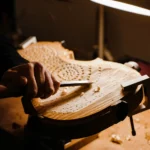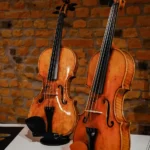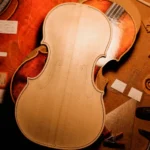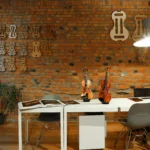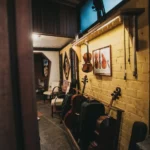Let’s take a trip to Cremona, the birthplace of violin making over 400 years ago.
Back to BlogA trip to Cremona is like taking a trip back in time to when art and music were all over the cities. Cremona is one of the most important cities in Italian violin making, where generations of instrument makers have left their mark on music history. This beautiful city welcomes all kinds of travelers, thanks to its rich historical, artistic and musical heritage. Scroll down and find out all about this enchanting city.
About Cremona
Cremona is a northern Italian city that sits on the banks of the Po River. It has been a city since Roman times, known as one of the oldest violin manufacturing cities in history.
Famous for its violin making craftsmanship and the fact that it produces more stringed instruments such as violins, violas, cellos, and guitars than any other place in the world. Established by the Romans in 218 BC, today’s Cremona boasts a population of over 72,000 residents.
What makes Cremona special?
One of the few cities to have preserved the art of violin making in its entirety, Cremona has entirely dedicated itself to the instrument.
The city of Cremona is well known as the home of some of the best violin makers in history. From Antonio Stradivari and Joseph Guarneri to contemporary well-known makers such as Luca Salvadori, Elena Bardella and Luiz Amorim: there is no doubt, that Cremona is a benchmark for the instrumental world. The roots of this violin making tradition can be traced back to 14th century when Italian luthiers were among the very first in Europe to perfect the art of violin making.
In a city renowned for its musical heritage, master violin makers still bow their finest creations today. To this day, skilled artisans here are dedicated to the centuries-old tradition, which has seen more than 3,500 craftsmen deliver masterpieces to an illustrious list of illustrious names – from Paganini to Mozart to Horowitz.
The violin craftsmanship of Cremona was recognized as part of the Unesco Intangible Cultural Heritage list in 2012.
The violin making workshops around the city
The tradition and heritage of violin making still live in the city, luthiers follow the ancient cremonese method of violin making using precious wood, and techniques passed down from generation to generation. As you walk around the city, you will pass by many workshops, sometimes unnoticeable as most of them prefer to work ‘hidden’ across the town.
What better setting for a workshop than the city that’s been producing fine violins for generations? Here are pictures of our makers working in their workshops in Cremona.
Where to start with places to visit in Cremona:
Violin Making workshop
A unique tour of violin making workshops with multiple violin makers experience.
During this workshop you will be learning everything about the process of making a violin from start to finish and guided by master violin makers who live and work in Cremona. The tour takes place around the city, inside the most famous violin making shops based in Cremona. If you are interested in learning more about the art of violin making, contact us.
The Duomo
The Cathedral of Cremona dedicated to Santa Maria Assunta was built at the beginning of 1185.
In the years 1952-59 it was discovered that the original building has a basilica layout with three apsidal naves. Its ruins are now partly visible from the crypt.
With a Gothic structure, the pre-existing Romanesque church is one of the most outstanding examples of religious architecture of Northern Italy.
The Cathedral standing today went through subsequent modifications, primarily thanks to the work carried out between 1284 and 1341 by the Masters of Como, under the direction of Maestro Giacomo di Gabbiano and Horace da Prata.
Inside the church, you will find many beautiful paintings.
In the heart of the medieval city, the Cremona Cathedral can be found in Piazza del Comune.
Il Torrazzo
Next to the Cathedral standing in Piazza del Comune, there is Torrazzo of Cremona, a 112 metres high bell tower.
Torrazzo was created through the superimposition of two structures: a Romanesque tower dating back to 1267 and a second tower with two octagonal drums.
The astronomical clock indicated the movement of the stars and the moon phases and was erected in 1583. The belfry encloses seven bells, each dedicated to a saint and one in particular dedicated to the patron of the city, San Homobonus.
And to leave you breathless, the panorama on the highest point of the tower has a fantastic view of the city and the river.
Palazzo del Comune
It was constructed to be one large room for public meetings back in 1206.
Until the end of the 15th century, the building’s structure remained untouched when the mullioned windows were replaced with rectangular windows. A marble balcony was added to the front central pillar.
Palazzo displays “The Porta” that dates back to the second half of the 16th century, and the Council Chamber displays a plaster cast of “Porta Stanga” (the original is in the Louvre).
In other rooms, there are canvases recovered from demolished city churches, all painted by Genovesino, Malosso and Boccaccino.
Casa Stradivari
Another place not to miss is the building that served as the workshop and home of Antonio Stradivari from 4 July 1667.
In commemoration to the master violin maker who lived and worked in Cremona, a plaque has been placed just outside the building.
Get to know more about Antonio Stradivari and his story at our blog!
Teatro Ponchielli
The Theatre was founded in 1747, its design was Giovanni Battista Zaist’ duty and was given the name the Nazari Theatre. Although, the building standing today is a result of a series of various interventions lasting 250 years.
The Theatre has suffered 2 fires and was rebuilt twice, the last one gave the theatre its present shape of a horseshoe, with a vast parterre topped by three tiers of boxes, a gallery, and a loggia decorated with stucco, gold and ivory.
Ponchielli Theatre opens for events divided by season: from operas to concerts and prose. The calendar of events also features shows for more mature audiences, such as operettas, or family performances, such as musicals and puppet shows.
Museo del Violino
Clearly, this is the deepest connection between Cremona and the art of making violins. The museum brings the history of great masters of the past and features contemporary figures from the world of violins in a specially dedicated space.
Step-by-step, this museums immerses you into the violin making universe, from the instrument’s origins to the schools and contemporary violin makers, as seen in the Permanent Collection of Contemporary Violin Making.
Music Conservatories: Giuseppe Verdi
The Cremona Civic School of Music was founded in the early seventies. In 2002 the School was authorized by the Italian Ministry of Education, Universities and Research (MIUR) to issue university-level qualifications (AFAM).
The school’s excellent level of teaching makes it a meeting place for students from different parts of Italy. The Vocal department also attracts pupils from all over the world, particularly from South Korea and China.Their educational profile is complemented by cooperation with institutes shared with the musicology course of the Pavia University, the Cremona international violin making school and the “Stauffer” foundation. See more.
Music Conservatories: Stauffer
Strengthened by Cremona’s history and identity, the Stauffer Center for Strings is the first international music center for higher education, research, composition, production, management and innovation, entirely dedicated to stringed instruments.
Founded in 1985, as a leading academic center for the high-quality education of stringed instrumentalists, the Academy faculty brings together some of the most famous and appreciated Italian and international artists to guarantee an integrated and varied academic offer. See more.
Not only of violin making the city lives for
Eating Well in Cremona is a secular tradition; among its main foods, there is Torrone (nougat), Marubini (a type of filled pasta), and Mostarda (spicy candied fruit and vegetables).
The Cremona countryside is particularly known for its bovine cattle; thus, dairy products and cold meats are important for local production.
If you ever come around, we will make sure to share with you the beautiful things Cremona is known for, besides violinmaking, of course! A legendary city that is full of unforgettable memories, a source of inspiration for some of the best artists from the past until nowadays.





